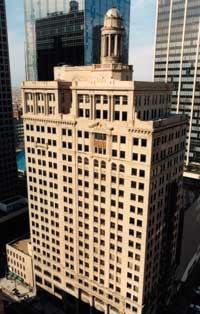Power Up As a young man working for his father’s development firm, Ted Hamilton saw the renaissance of downtown Denver in the ’90s.
When he moved to Dallas in 1997 to strike out on his own, Hamilton, now principal of Hamilton Properties, a six-person boutique development firm, wanted to be part of the same movement in another city. The older elegant buildings of downtown Dallas captured his imagination. “We saw that Dallas was coming around,” Hamilton says. “There was a stock of old buildings that were available for reasonable prices, and the City of Dallas had made a commitment in 1995 to the tax-increment finance district. That was when we knew they made a commitment to revitalize downtown Dallas. Without the city’s commitment, we never would have come. We knew we could buy value.”
And he did. In 1997 Hamilton Properties bought the Davis Building, a 20-story office building that had stood vacant in downtown Dallas for 15 years. The building went for around $8 a square foot, and now it’s 97 percent occupied and renting for $1.28 per square foot.
These older commercial properties also tend to have some features that quickly become contemporary advantages. In the South, many office buildings feature large windows and small footprints—a great combination for residential space—because they were built before central air conditioning became common. Older commercial buildings also often have a solution for the perennial problem of parking. “Cities that exploded in the 1950s tend to have a lot of buildings that are now vacant with built-in parking solutions,” Hamilton says.
Now the developer is opening the second of what’s become an ongoing series of apartment buildings emerging from office buildings that have long stood vacant. On the heels of the success of the Davis Building, Hamilton bought two Dallas office buildings, creating the apartment complex known now as Dallas Power & Light (DP&L).
It wasn’t quite as challenging or time-consuming as the initial Davis project. “The City of Dallas figured out that they needed to help,” Hamilton says. “Now it’s much faster going.” Residents moved into DP&L in February 2005.
Public money and support helped. Hamilton received a development grant from the city for the Dallas Power and Light property, which is also located in neighborhood designated as a public improvement district with tax-increment financing, or TIF. It works like this: For roughly 70 percent of the property in downtown Dallas, the amount that the general fund receives from property taxes is frozen at 1996 levels. As property taxes increase every year, the difference between the 1996 level and the current amount flows into the incentive fund. For example, if the property taxes were $10 in 1996 but are now $15, $10 would go to the general fund and $5 would go to the TIF fund for developers to use for projects such as public right-of-way improvements, streetscapes, environmental remediation, façade improvements, or even building a park.
Hamilton isn’t the only developer involved in the residential resurgence of downtown Dallas. It takes a diverse group of developers to get to the critical mass of residents needed to create the desired 24-hour neighborhood. “We believe more is better,” Hamilton says. “”We compete, but the added vibrancies of competing buildings helps build the neighborhood.” Retailers are taking notice. A 20,000-square-foot grocery store is set to open in June 2005.
And Hamilton is continuing to expand. “We made the economics work,” he says, and in June, he expects to begin construction on his third office-to-apartment project, the Fidelity Union Building.
